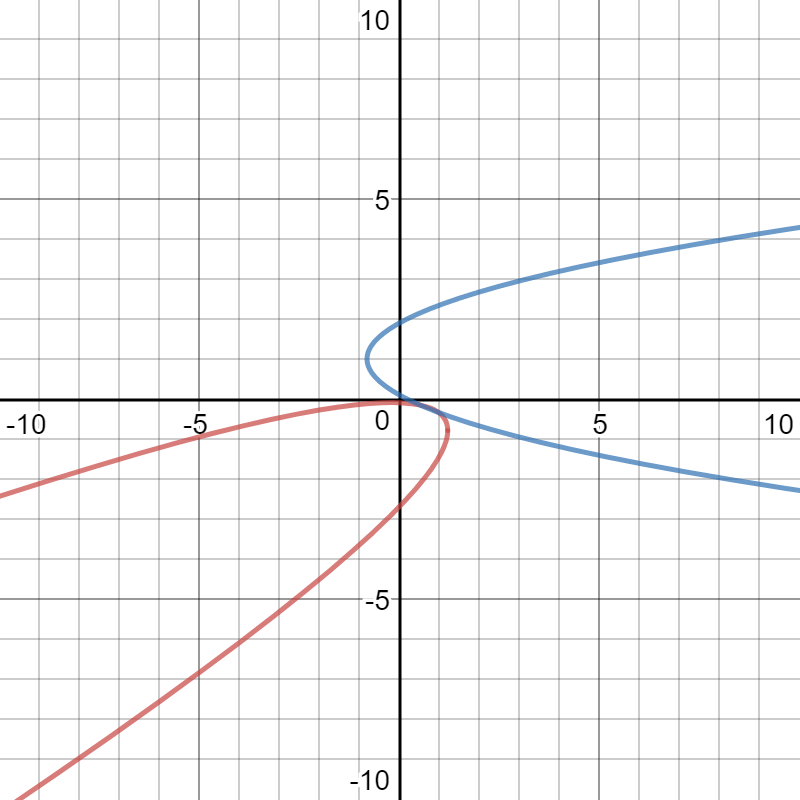Question #b8aa5
1 Answer
Explanation:
The reference Rotation of Axes gives equations that will help us to solve this problem.
Given:
Matching coefficients with the General Cartesian form for a conic section:
We observe that:
Equation [9.4.6], in the reference, gives the angle that the parabola must be rotated to align it with one of the axes:
My intuition tells me that A' = 0 but we shall use equation (9.4.4a) to verify that:
We know that
To find C', use equation (9.4.4c):
To find D', use equation (9.4.4d):
To find E', use equation (9.4.4e):
Equation (9.4.4f) tells us that
The General Cartesian Form is:
The standard form for a parabola that opens left or right is:
The following is the above equation in that form:
Here is an image with the original parabola in red and the unrotated parabola in blue:

